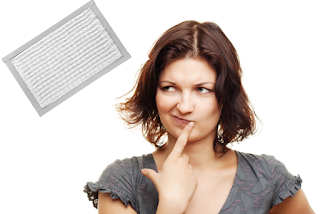Though it’s only fall, Old Man Winter is already kicking things into high gear. Is your heat pump up for the challenge? Heat pumps operate differently in the cooler months than they do in warmer ones. Just a few simple precautions can help you ensure efficiency and comfort over the cold weather season.
Why Does My Heat Pump Work Different in the Winter?
Unlike other heating units, heat pumps don’t generate heat, they move it from one place to another. In the summer that means from the inside, out. In the winter, it is moved from the outside, in. Though they do lose a bit of operational efficiency when temperatures dip below freezing, they can still manage to pull heat from the air in the winter. But with a few simple tips, you can makes your heat pump’s job easier, helping it eke out just a bit more performance.
Ways To Boost Performance
Make the most of your energy dollars, ensuring comfort and the longevity of your system with these tips:
- Regularly Change Home Air Filters
Changing air filters every 1-3 months helps your system move air more easily, safeguarding its lifespan. It also ensures better indoor air quality. - Check Your Temperature
Turn your system down whenever is unoccupied, keeping temperatures to 65-75 F for optimal operation. - Smarten Up Your Thermostat
A smart thermostat can help you boost comfort and save energy. Rather than cranking up the thermostat (which won’t heat your home any faster – but will send your energy costs skyrocketing), rely on a smart thermostat to slowly turn the heat up a few minutes before you’ll need it instead. Program it in advance or adjusting it via mobile device on-the-fly, such as before returning from shopping/work. Just be sure to ask your HVAC pro about heat pump compatible models. - Keep Things Clear
Clear leaves and debris from the area surrounding your outside unit, as blocked airflow sabotages airflow and efficiency. NEVER COVER YOUR SYSTEM. Your heat pump does not need winter shelter. Covering it can lead to mold growth and pest infestation. Leave ice alone as well. Your heat pump can handle this in ‘defrost mode.’ - Understand ‘Defrost Mode’ is Normal
Defrosting is a normal part of winter operation for heat pump systems. However, this cycle is short. If it seems to be lasting overly long, contact your HVAC pro. - Try to Avoid ‘Emergency Heat’
‘Emergency’ mode should be reserved for actual emergencies, such as when your system isn’t operating properly. Emergency heat is generated electrically, rapidly driving up energy bills. - Consider Dual-Fuel Models
Heat pump aging? Dual-fuel heat pumps, paired with a gas furnace, may offer more efficient operation in sub-zero temperatures. - Don’t Skimp on Annual Maintenance
Regular heat pump cleaning and maintenance in the spring and fall ensure your system is up to par before weather extremes set-in, helping you prevent the need for emergency service.
The best heating companies don’t just fix it when it’s broken, they help you keep things running like an efficient, well-oiled machine. Maximize your heat pump performance with the help of the experts at H&H Heating & Air Conditioning today.
This blog was originally posted on https://www.delcohvac.com/how-to-maximize-your-heat-pump-performance/



